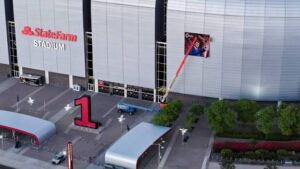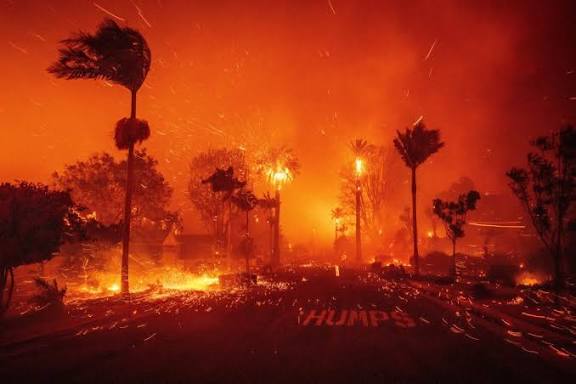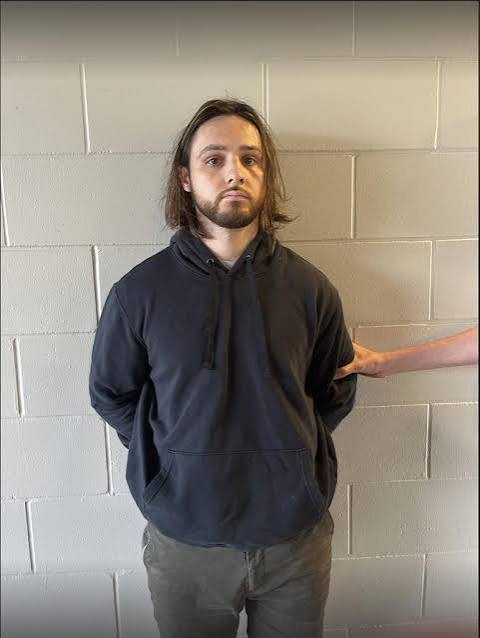100,000 Expected at Charlie Kirk Memorial Why Security Is Super Bowl‑Level

The incident is expected to attract a large crowd as 100,000 people. The Homeland Security Department has nominated the service one Sear Level 1. Today we will discuss about 100,000 Expected at Charlie Kirk Memorial Why Security Is Super Bowl‑Level
100,000 Expected at Charlie Kirk Memorial Why Security Is Super Bowl‑Level
When the public memorial for conservative activist Charlie Kirk is held on September 21, 2025, at State Farm Stadium in Glendale, Arizona, authorities expect over 100,000 people to attend. What’s more remarkable is the scale of security being mobilized — described by officials as equivalent to that of a Super Bowl or major national event.
Why this extraordinary security? How is this level justified, planned, and implemented? Below we explore the background, the threats, the logistics, and implications of securing such an event.
Who Was Charlie Kirk & Why This Memorial Matters

Charlie Kirk (born 1993 — died September 10, 2025) was the founder of Turning Point USA, a prominent conservative youth organization. He became a well-known figure in right-leaning political circles, especially for his work on college campuses.
He was assassinated during a speaking event at Utah Valley University. The event exposed significant security gaps at political events — especially those with public figures, large crowds, controversial speakers, and often outdoor venues.
The memorial is expected to draw not only tens of thousands of mourners, but also high‐profile speakers: President Donald Trump, Vice President J.D. Vance, members of the Cabinet, prominent conservative political figures. Because the attendance includes the top levels of national leadership, the event takes on national significance.
Security Classification: Level-1 SEAR & “Super Bowl-Level”
To understand how serious this is, it’s helpful to know about the Special Event Assessment Rating (SEAR). A Level‐1 SEAR event is the highest designation, used for events of national / international importance that require comprehensive security coordination among multiple agencies. Super Bowl, presidential inaugurations, international summits often get this level.
The Department of Homeland Security (DHS) has officially designated Charlie Kirk’s memorial as SEAR Level 1. This triggers activation of large-scale interagency response: Secret Service, FBI, local law enforcement, possibly National Guard or state police, traffic, crowd control, intelligence monitoring, etc.
So when people say “Super Bowl‐level security” for this memorial, they are using that as shorthand—the formal rating is comparable.
Threats, Risks & Why Heightened Security
What specifically makes authorities treat this memorial as so risky? Several factors come into play:
-
High‐Profile Attendees: Presence of the President, Vice President, members of the Cabinet, others. These people require protective detail, secure perimeters, advance sweeps, etc. A lot of moving parts in terms of VIP logistics.
-
Potential for Political Violence / Targeting: Kirk’s assassination is itself a highly political event. After his death, many in his movement and others have expressed fear of further attacks. Authorities are tracking “several threats of unknown credibility.” Potentially violent actors, lone offenders, extremists might see the memorial as a target.
-
Large Crowd Size: Stadium capacity is ~63,000 fixed seats; overflow spaces are provided. But registrations suggest over 200,000 people have expressed interest. Tens of thousands are expected, possibly exceeding physical capacity in some zones. That raises risks: crowd crush, medical emergencies, logistical bottlenecks.
-
Publicity / Media Attention: This is a nationally newsworthy event. Massive media presence — local, national, international. The more coverage, the more visibility (good for media, bad for potential adversaries who want attention).
-
Recent Vulnerabilities Exposed: The assassination itself highlighted weak points: lack of metal detectors, no bag checks, inadequate control of line of sight (e.g. rooftop positions), and other tactical oversights.
-
Symbolism & Emotion: Emotions run high in such memorials/ funerals. Crowd behavior may be unpredictable. Combined with strong political polarization, risk of protest or counter‐demonstration, possibly confrontations. Ensuring security while respecting free speech / assembly and mourners’ rights adds complexity.
Security Measures & Logistics
Given the above, what measures are being deployed?
| Measure | Details / Implications |
|---|---|
| Venue | State Farm Stadium (fixed seating ~63,000), with overflow facility: Desert Diamond Arena (~18,000). Must manage ingress/egress, parking, crowd flow across both venues and connecting infrastructure. |
| Screening | “TSA‐level screening”—metal detectors, perhaps walk-through detectors, bag checks, etc. Strict “no bag policy”: even clear bags normally allowed typically are being prohibited. Bring no bags; greater wait times expected. |
| Perimeter Control & Access | Advance screening of VIP stages, backstage zones; secure perimeters; coordination among venue security, local police, federal law enforcement. Deploy undercover/patrol officers. Possibly control airspace (e.g. drones). |
| Federal & Local Coordination | Secret Service is involved; Department of Homeland Security has the SEAR classification; state & local law enforcement; communication with organizers (Turning Point USA). |
| Monitoring and Intelligence | Tracking threats; possibly surveilling (camera networks, drones, real-time crime centers). Looking for suspicious persons, suspicious packages, etc. |
| Public Guidance | Instructions for attendees: wear red/white/blue, arrive early, expect long wait times, no bags, limited parking, carpooling encouraged. Overflow options given. |
| Emergency Response Planning | Medical teams on standby; contingencies for evacuation; behavioral safety (crowd management); coordination for protest management; communication plans in case of threat. (While not all details publicly disclosed, such are standard in Level 1 SEAR events.) |
Comparison: Super Bowl & Other Major Events
It’s useful to compare this memorial’s security to those for Super Bowl games, political conventions, etc., because those are the benchmarks being cited.
-
Super Bowl: Tens of thousands of attendees, major VIPs (celebrities, corporate sponsors, sometimes government officials), extensive media coverage, national and even international attention. Heavy security: joint agency operations, air and ground surveillance, cordons, restricted zones, sniffer dogs, bomb squads, etc.
-
Political Conventions or State Funerals: Similar overlaps of government VIP presence + large public attendance + emotional or symbolic weight. Threat assessment high. Security protocols very strict.
The Kirk memorial has many of those features: major political figures, a large crowd, strong media presence, potential threats, and a tragic event setting. So in context, the comparison to Super Bowl or state funeral is not just rhetoric — the SEAR Level 1 designation puts it in that ballpark.
Challenges & Possible Weaknesses
No security plan is perfect. Based on what we know, some of the challenges that need careful handling include:
-
Crowd Size vs Capacity: If more people show up than can be seated safely (stadium + overflow), crowd control outside becomes critical — avoiding bottlenecks, dangerous clustering, heat/sun exposure, etc.
-
Logistics of Entry/Exit: First-come, first-served seating. Long lines, possible confusion. Transportation and parking can be overwhelmed. Routes to the stadium must be secured and guided; traffic control needed.
-
/ Environmental Risks: Arizona in September can be very hot; heat illness, dehydration are risks. Ensuring medical teams and water availability.
-
Threat Credibility vs Overreaction: Authorities must balance being prepared for credible threats (terrorist, extremist, lone actors) without inciting panic. False alarms, impersonators are also an issue (see: an individual arrested for impersonating law enforcement with weapons on site).
-
Freedom of Speech / Protest Rights: With political polarization, there may be counter-protesters or demonstrations. Security must manage these without infringing constitutional rights, but also prevent clashes. Crowd monitoring, segregated zones, police presence.
-
Information Leakage / Social Media: Live coverage and social media posts can reveal vulnerabilities in real time; threat actors might exploit these. Security plan must include controlling certain information flows, or ensuring situational awareness.
Incident Example: The Armed Man Who Impersonated Law Enforcement
One concrete event that underscores the seriousness: A man identified as Joshua Runkles was arrested at State Farm Stadium ahead of the memorial. He was carrying a gun and knives, and presenting expired law enforcement credentials. He claimed to be conducting a security sweep for a VIP—but he had not coordinated with either the event organizers or the U.S. Secret Service.
This incident illustrates several things:
-
The risk of unauthorized individuals inserting themselves into security zones.
-
The potential for confusion or miscommunication if private or unofficial security is not vetted or coordinated.
-
The need for pre-event sweeps, credential checks, and clear boundaries of who is allowed where.
-
The possibility of weapons being brought in, or at least attempted entry with weapons.
Broader Implications & Lessons
Putting on a memorial of this sort with Super Bowl-level security has broader implications for politics, public safety, freedom of assembly, and how political violence is handled in the U.S.
-
Political Speech and Safety: The event highlights that being a public political figure—even an activist—now carries real risk, and that traditional security measures may be insufficient, especially at venues not designed for high security.
-
Campus Political Events: Many dangerous events have occurred at universities or smaller venues with low security. This incident (Kirk’s assassination) may force universities and event organizers to rethink how they secure events, especially controversial ones.
-
Government vs Private Security: As seen, private security or ad hoc arrangements may not be enough. Government classification (like SEAR Level 1) brings federal resources, coordination, and standardized protocols. There may be push for stronger regulations or standards for private event security.
-
Polarization & Security Burden: With political violence increasingly part of discourse, security becomes not just a logistical or law enforcement issue but a civic one. Who should pay for these elevated security costs? Who manages them? How are civil liberties preserved while safety is ensured?
-
Precedent Setting: The memorial may set precedents for how similar events are handled in future: what constitutes “national significance,” who gets Level-1 classification, and what kinds of security measures become normalized for political events even with moderate attendance.
Conclusion
The memorial for Charlie Kirk is not just another public gathering. Because of its magnitude—both in terms of crowd size and political importance—it has been rightfully treated like a major national event. The SEAR Level 1 designation, Secret Service involvement, tight screening, strict entry rules, prevention of weapons or impersonations, and advance threat monitoring are all consistent with how security is handled for Super Bowls, state funerals, or presidential events.
The risks being mitigated are real: threats of violence, possibility of extremists or lone actors seeking attention, VIP safety, crowd control in extreme weather, outdoor logistics, and ensuring access while preserving order.
As America continues to grapple with political divides, the security demands of public events are only rising. The Charlie Kirk memorial may become a case study in how we balance the right to assembly, free speech, and public mourning with the very real necessity to protect lives in a volatile political environment.
How useful was this post?
Click on a star to rate it!
Average rating 0 / 5. Vote count: 0
No votes so far! Be the first to rate this post.
About the Author
usa5911.com
Administrator
Hi, I’m Gurdeep Singh, a professional content writer from India with over 3 years of experience in the field. I specialize in covering U.S. politics, delivering timely and engaging content tailored specifically for an American audience. Along with my dedicated team, we track and report on all the latest political trends, news, and in-depth analysis shaping the United States today. Our goal is to provide clear, factual, and compelling content that keeps readers informed and engaged with the ever-changing political landscape.




